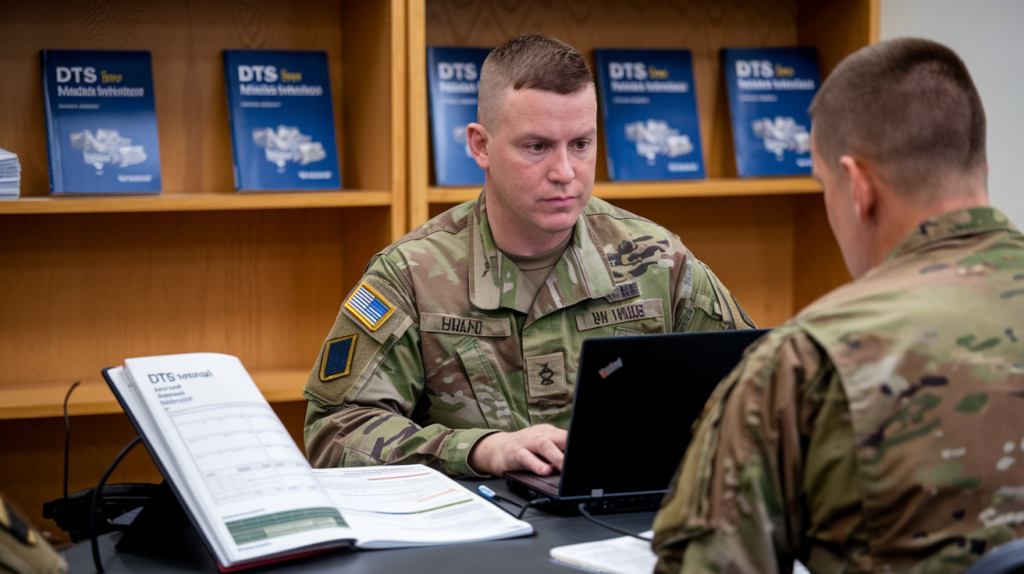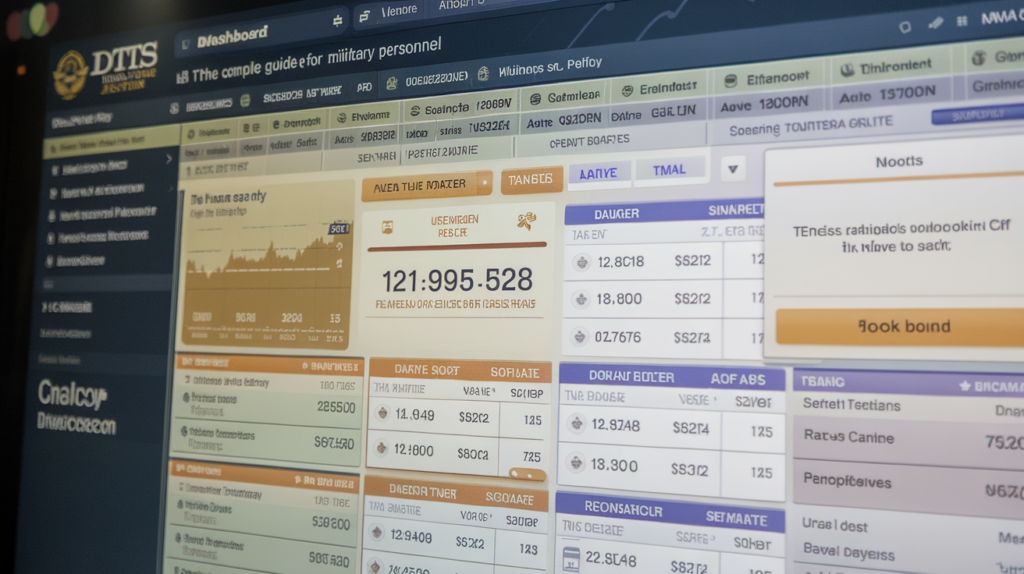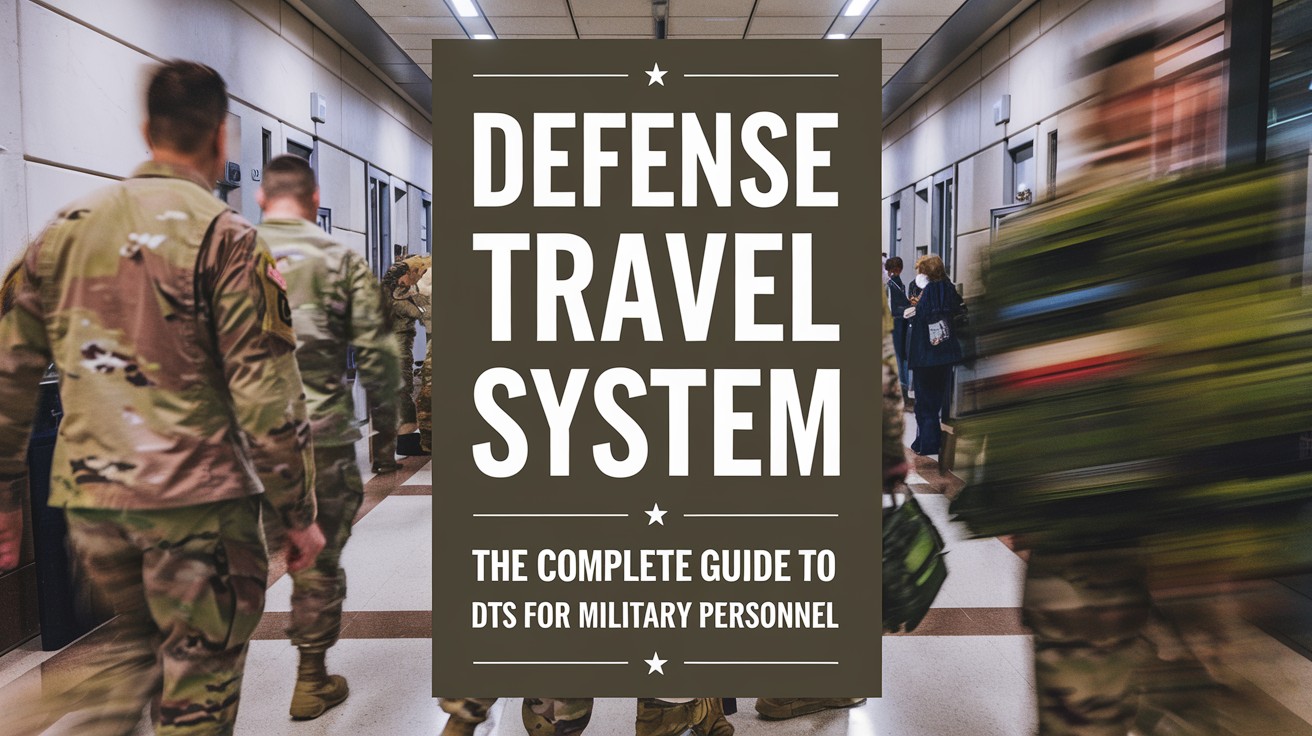Defense Travel System: The Complete Guide to DTS for Military Personnel
Traveling for official military duties can be complicated, but the Defense Travel System (DTS) is designed to make things easier. If you’re in the military, federal government, or a defense contractor, chances are you’ll need to navigate this system at some point. Understanding how to use DTS effectively can save you time, reduce stress, and ensure you’re reimbursed properly for travel expenses.
Table of Contents
In this article, we will dive into what the Defense Travel System is, how it works, and why it’s an essential tool for military personnel. By the end, you’ll have a clear understanding of DTS, making your official travel experience smoother.
What is the Defense Travel System (DTS)?
The Defense Travel System, commonly known as DTS, is an online system used by the U.S. Department of Defense (DoD) to manage travel authorizations, reservations, and vouchers for military personnel and other DoD employees. It allows users to plan and book trips, track travel expenses, and submit claims for reimbursement, all in one integrated platform.
DTS was introduced to streamline the travel process for defense personnel, reducing paperwork and making the system more efficient. The system is accessible from any internet-connected device, allowing users to plan their official travel from virtually anywhere.
Key Features of the Defense Travel System

1. Online Travel Authorizations
DTS allows users to submit travel authorizations online. This feature ensures that all official trips are approved by the relevant authorities before the journey begins. This process is vital for obtaining the necessary clearance and funds to embark on any government-funded travel.
2. Booking Flights, Lodging, and Transportation
A significant advantage of DTS is that it integrates booking tools for flights, hotels, and rental cars. Users can make their reservations directly within the system, ensuring they follow federal travel regulations and get the best available rates. The Defense Travel System partners with the General Services Administration (GSA) to provide access to negotiated government rates.
3. Expense Tracking and Vouchers
Throughout the trip, travelers can track their expenses using DTS. After completing their journey, they can submit travel vouchers for reimbursement, detailing all the costs incurred during their official travel. The system also provides updates on the status of travel claims, making it easy to know when reimbursements will be processed.
4. Automated Calculations
DTS automates most of the complex calculations involved in travel reimbursements. From per diem rates for lodging and meals to mileage allowances for personal vehicles, the system takes care of it all. This feature minimizes errors and ensures that travelers are paid accurately and quickly.
How to Use the Defense Travel System (DTS)
Using DTS for the first time may seem overwhelming, but once you get familiar with the interface, it becomes straightforward. Here’s a step-by-step guide to navigating the system.
Step 1: Logging In
To use the Defense Travel System, you’ll need a Common Access Card (CAC) or a username and password. Once logged in, you can access your travel dashboard, where you’ll manage your trips, expenses, and vouchers.
Step 2: Creating a Travel Authorization
When you’re assigned to official travel, the first step is to create a travel authorization. This document outlines the details of your trip, including the destination, dates, and reason for travel. You’ll also include an estimate of the costs involved.
Step 3: Booking Travel Arrangements
Once the travel authorization is approved, you can use DTS to book your flights, hotels, and rental cars. The system automatically searches for government-approved rates, ensuring compliance with Joint Travel Regulations (JTR). Keep in mind that some locations may require additional documentation, such as foreign clearance.
Step 4: Tracking Expenses During the Trip
As you travel, it’s important to keep a record of your expenses, such as meals, transportation, and other incidentals. You can upload receipts directly into DTS to simplify the voucher process when your trip concludes.
Step 5: Submitting a Travel Voucher
After your trip is complete, you’ll submit a travel voucher in DTS. This document lists all your expenses and calculates the reimbursement you’re owed. Once submitted, your voucher will be reviewed by your finance office before being processed for payment.
Benefits of Using the Defense Travel System
1. Simplified Travel Management
DTS centralizes the travel process, making it easier for travelers to manage all aspects of their trip in one place. From authorizations to bookings and expense reporting, everything is housed within the same system.
2. Faster Reimbursements
One of the main frustrations with government travel used to be the lengthy reimbursement process. With DTS, reimbursements are processed more quickly, especially if all necessary receipts and documentation are uploaded correctly.
3. Government Compliance
DTS ensures that all bookings and expenses comply with government regulations. This minimizes the risk of travelers booking accommodations or services outside of authorized channels, which could lead to denied claims or other complications.
4. Time Savings
By automating many of the manual processes previously associated with official travel, DTS saves time for both travelers and administrators. The system’s ability to calculate per diem and mileage rates automatically also reduces the risk of errors.
Common Challenges with DTS and How to Overcome Them
While the Defense Travel System is highly beneficial, it’s not without its challenges. Here are some common issues users face and tips on how to overcome them:
1. Technical Difficulties
DTS requires the use of a CAC card for access, and sometimes users experience issues with logging in or using the system due to browser compatibility. To avoid problems, ensure you’re using a compatible web browser and that your CAC reader is functioning properly.
2. Incorrect Voucher Submissions
Many users struggle with submitting vouchers correctly, especially when it comes to uploading receipts and ensuring that expenses are properly categorized. Take your time to review each section of the voucher and ensure all receipts are attached before submitting.
3. Delayed Approvals
At times, travel authorizations can be delayed due to bottlenecks in the approval process. To avoid this, submit your travel request as early as possible, and follow up with your approving official to ensure it’s processed promptly.
Tips for Getting the Most Out of the Defense Travel System

- Plan Ahead: Ensure your travel authorizations are submitted well in advance of your trip. This will help you avoid delays in approvals and give you enough time to make any necessary adjustments.
- Keep Records: Always keep detailed records of your expenses and receipts. While DTS allows you to upload digital copies, it’s a good idea to maintain physical copies until your reimbursement is processed.
- Understand Per Diem Rates: Familiarize yourself with the per diem rates for the location you’re visiting. This will help you plan your expenses and avoid overspending on meals or lodging.
- Use the Help Desk: If you encounter any issues, DTS offers a help desk with support personnel who can assist with technical problems, login issues, or questions about the system.
Conclusion
The Defense Travel System is a valuable tool for managing official government travel. Its ability to streamline the process of booking flights, submitting vouchers, and tracking expenses makes it a must-use platform for military personnel and other government employees. While there are some challenges associated with the system, following best practices and being proactive can help you navigate DTS smoothly.
FAQs
1. What is the Defense Travel System used for?
DTS is used to manage official travel for military and government personnel, from authorizations to booking travel and processing reimbursements.
2. How do I access DTS?
You can access DTS through a secure login using a Common Access Card (CAC) or a username and password.
3. How long does it take to receive a travel reimbursement?
Once a voucher is submitted and approved, reimbursements are typically processed within a few days.
4. Can I book flights and hotels through DTS?
Yes, DTS allows you to book flights, hotels, and rental cars through an integrated system that ensures compliance with government regulations.
5. What do I do if I experience technical issues with DTS?
If you experience technical difficulties, you can reach out to the DTS help desk for assistance or ensure you’re using a compatible browser and CAC reader.
There are no reviews yet. Be the first one to write one.







